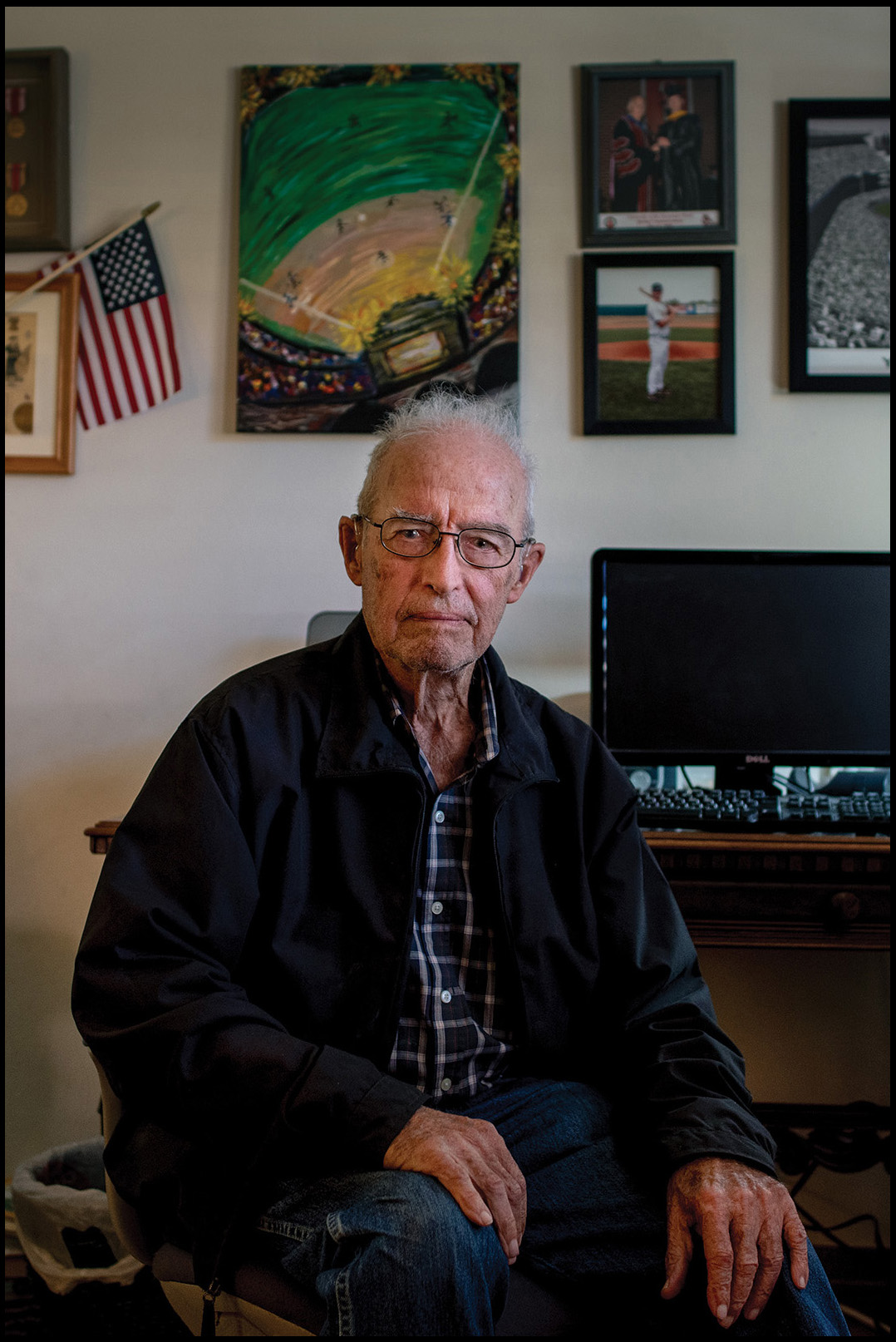Fred Chapal
D-Day June 6, 1944
Landed on Utah Beach
Fred Chapal
Private First Class, U.S. Army
1943-1945

Pfc. Fred Chapal,
San Antonio, TX, 1943
My worst day was the second or third day after D-Day because we were worried sick that they were going to use mustard gas. If they had, I wouldn’t be here.
I was born in Mexico City in 1923 and I’m fluent in two languages. We moved to San Antonio in 1928. I was the oldest of four kids. My dad was a doctor in Mexico City and my mom was from the Chihuahua Ranch in Mission, Texas. My mother’s father, Ramone Vela, was a very successful rancher. My mother’s family was the first to plant citrus in the Rio Grande Valley in the 1800s.
I graduated high school in 1940 and went to Arkansas Tech to study chemical engineering. I was there until January, 1943. They drafted me into the Army but then turned me down because I got hit by a car in third grade and broke my leg. I argued with them, so they let me in. I was 19.
They found out I had chemical engineering and put me into chemical warfare. I went overseas in January, 1944 and joined the 87th Chemical Mortar Battalion. I was there on D-Day at Utah Beach. You’d drop the mortar shell at the muzzle and turn your head and it would come flying out past your ear. My ears still ring. We were so green we didn’t know what was going to happen. We just kept firing and hoping we wouldn’t get killed. My squad had eight men and two jeeps. The front jeep had a trailer with the gun. The second jeep had a trailer with all the ammo. I went across Europe in a jeep and didn’t have to walk.
The Battle of the Bulge was very surprising. We were at a standoff. There was no shelling going on; nobody was moving. All of a sudden, all hell broke loose and that’s when the battle started. It was aimed darned near right where we were. We were about 2,000 yards behind the front lines and had observers ahead of the front line telling us where to aim our guns. If the front line was static, we tried to help them move forward.
We went into Germany from there. When we were at the Rhine River they had us drive 300 miles to help troops up from Southern France. I had never driven a car in my life and they had me driving the jeep. When we got back, this guy said, ‘They’re not going to let you drive anymore. You fouled up the jeep because you kept your foot on the clutch.’ We celebrated the end of the war by sitting around talking and joking, and wondering what we were going to do next.
We were in Naumburg, Germany, about five miles from the Russians, for a month or two. I was discharged in 1945 as a Pfc. My best day in the Army was when the war was over. My worst day was the second or third day after D-Day because we were worried sick that they were going to use mustard gas. If they had, I wouldn’t be here.
I came back to San Antonio and immediately enrolled at St. Mary’s University. I majored in business and accounting and graduated in 1947. My wife went to Trinity University. We got married in 1948 and were married for 74 years. I went to work for Great Western Investment Company as a branch office manager for 17 years. In 1951 I bought a hay farm through a program for veterans. I’ve got 76 acres in Lilo, Texas. I’m still doing it. I’ve been working at Fort Sam Houston since 1983. I’m not going to retire. I want to keep my mind active. As long as I’m in good health, I’m going to stay there.
In 2014, 70 years later, I went back for the D-Day anniversary. Then we went back in December for the 70th anniversary of the Battle of the Bulge. It was astounding. {01-28-2017 • San Antonio, TX}
